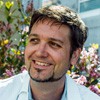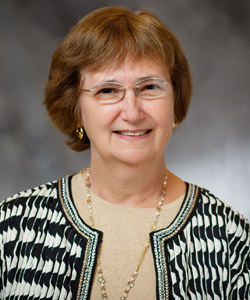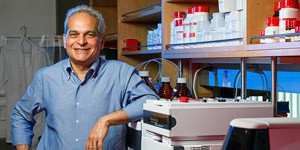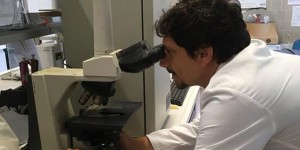By Guillermo Moreno-Sanz

Dr. Moreno-Sanz has authored more than 30 scientific articles and 3 patents describing the role of the endocannabinoid system in pain perception. Graduated in Biochemistry and Organic Chemistry from the University of Zaragoza, he obtained his PhD in Neuroscience from the Complutense University of Madrid, in Spain. He gained extensive international experience with long-term fellowships in the Netherlands, Italy, and the United States, developing most of his academic career at the University of California, Irvine, where he discovered a new class of cannabinoid analgesic with high clinical potential. In 2017, he acted as a consultant to the National Academies of Sciences of the United States in the preparation of the report "The health effects of cannabis and cannabinoids" and later founded Abagune Research to offer scientific advice and R&D solutions to the international cannabis industry. In 2020 he assumes the scientific and medical direction of Khiron Life Sciences in Europe.
Meet the Experts is a series of interviews conducted by experts from the field of Cannabis to world leaders in research and clinical practice of Cannabis as medicine.

Cecilia J Hillard, PhD is Professor of Pharmacology and Director of the Neuroscience Research Center at the Medical College of Wisconsin. Her laboratory studies the pharmacology and biochemistry of the cannabinoids. Her research has been funded by NIH since 1987, and she has published more than 225 peer-reviewed papers and has an H index of 73.
Dr. Hillard received the 2011 Mechoulam Award and the 2017 Lifetime Achievement Award from the International Cannabinoid Research Society for her contributions to our understanding of cannabinoid pharmacology.
Guillermo Moreno-Sanz: How did you first got involved with cannabinoid research? You were studying how THC works before CB1 receptors were discovered.
Cecilia Hillard: I graduated from college in January, 1977 with a BS degree in Chemistry and returned to my hometown of Milwaukee. Unfortunately, the economic situation in Milwaukee was bad at that time and jobs for chemists were scare. But, fortunately for me, I got a job as a research technician in the lab of a new investigator at the Medical College of Wisconsin-Dr Alan Bloom. Alan had just completed a postdoctoral fellowship with Dr. Bill Dewey and was starting his own lab to explore the mechanisms of action of the cannabinoids. This was before a receptor was identified, yes, and Alan thought that THC acted to alter signaling of other neurotransmitters by changing their release and/or synthesis. He was actually correct!!! It was a very manual process, we did thousands of synaptosomal preparations and examination of catecholamine turnover, such as serotonin and dopamine.
GMS: What was the dominant hypothesis at the time? Were you alone? What other researchers do you remember from those times?
CH: The dominant hypothesis was that THC interacted with membrane lipids and, thereby, physically altering the functioning of membrane proteins. And this led to changes in the functioning of the "classical" neurotransmitters. We were foucsed mostly on biogenic amines. We were not alone; I remember many great conversations with Alex Makriyannis at that time about this idea. Through Alan, I was introduced to the Virginia Commonwealth University cannabinoid group, including Billy Martin, Sandra Welch and, of course, Bill Dewey.
GMS: You are a pioneer in the field, I cannot imagine how exciting it has been to participate in the last 30 years of cannabinoid research. What breakthrough(s) do you particularly recall?
CH: It has been a wonderful progression! Of course, I remember Allyn finding a clear binding site using 3H-CP55940 as a ligand. And Bill Devane and Raphi Mechoulam's heroic efforts in identifying anandamide as an endogenous ligand. I also remember vividly Miles Herkenham's autoradiography studies showing that the receptor was primarily presynaptic and Ken Mackie's paper showing that cannabinoids inhibited calcium influx. These studies got me to start looking at neurotransmitter release again, using synaptosomes. But the sensitivity was just not there. Of course, electrophysiological approaches turned out to be the way to go to answer this question.
GMS: As a researcher you have covered many aspects of cannabinoid molecular biology, physiology, and pharmacology. Is there a topic that fascinates you in particular? Which of your contributions makes you feel "prouder"?
CH: I would have to say that I am most fascinated by our current work to figure out how the CB2 receptor signals and what regulates its signaling. It has been really difficult, and we are just getting the tools we need to get answers. I am most proud of our work in the stress area, but I cannot take that much credit for it. It was driven by Sachin Patel in my lab and Matt Hill in Vancouver. I just paid the bills and edited their amazing manuscripts! I am so proud that they are both still in the cannabinoid research field and making outstanding contributions.
GMS: After many years of pharmaceutical development, phytocannabinoids still remain the tools we have to target the ECS clinically. Do you think the therapeutic potential of cannabis and cannabinoids is over-magnified? What strategies do you foresee will be tested in the future to increase their therapeutic index?
CH: I think that the phytocannabinoids do have promise for therapeutic development, but that we need to get past using cannabis as a whole. The plant gave us a wonderful pharmacopoeia of molecules, but they have some negatives. These negatives include adverse effects, as you mention, and very poor oral bioavailability. I think that an important approach is to "take apart" the various molecules and combine them in ways to maximize synergy and minimize adverse effects.
GMS: This is an interesting debate, as whole-plant preparations have been portrayed as more efficacious and less aversive than purified cannabinoids, such as, for example, Marinol. In recreational markets, the existence of an "entourage effect" between molecules in the plant is almost an axiom even though the current scientific evidence seems to negate such effect. Going back to your response, adverse effects caused by cannabis seem to be related to THC dosing, and poor oral bioavailability is inherent to the lipophilic nature of cannabinoids. How do you think these "negatives" that you mention could then be overcome?
GH: I agree with you that the entourage idea has not been supported by experimental evidence. However, one reason is that it is a huge undertaking to do all the combinations required to determine interactions. But, to answer your question, if we had the ability to mix and match the phytocannabinoids, I can imagine adding in just enough THC to produce beneficial effects while minimizing adverse effects. I could also imagine making structural alterations in the molecules that would reduce their metabolism by cytochrome P450, for example. I am not saying these are easy to accomplish, but I think we need to add precision in dosing and avoid the haphazard pharmacokinetics that occur with oral dosing.
GMS: In your award conference at ICRS you focused on CB2 receptors. What do you think is the potential of this target to be exploited clinically for therapeutic gain? The lack of CB1-related intoxicating effects has always been presented as a strength of this pharmacological strategy but what type of indications could benefit from systemic CB2 modulation (activation or blockade)?
CH: I think that the jury is still out on the potential of CB2 ligands. Preclinical data show us that activation of CB2 receptors could be beneficial to address many interesting and potentially important diseases, including neurodegeneration, inflammation, fibrosis, and bone health. But we need to learn more about how receptor expression is regulated, what cell types are important, and it is clear that there is a very significant ligand signaling bias going on with many CB2 ligands.
GMS: Natural compounds, such as B-caryophyllene or some fatty-acid alkylamides from Ecchinacea, were described as selective CB2 agonists and are being commercialized as dietary supplements. Do you foresee any therapeutic claims being made in the future using these or other CB2 ligands?
CH: As far as a dietary supplement use, I get concerned that it muddies the waters in our attempt to exploit the cannabinoids as therapeutics for diseases. Companies are not interested in spending the money to develop a drug if consumers can buy the same thing without a prescription. I think that this has hurt the development of the phytocannabinoids in general.
GMS: The cannabis industry seems to be changing the landscape for academic research. How do you feel about more companies being involved and interested in societies such as ICRS or IACM? Many renowed academics are advising salient companies. You serve as an advisory board member for Phytecs. How has this experience been?
CH: I think we need to be cautious, but that we are all working toward similar goals-learning more about the cannabinoids and bringing forth therapeutic uses. I have enjoyed learning about how for-profit companies think and prioritize. In the end, more collaboration and increased funding (without strings attached!) will benefit our research and will accelerate the process of getting effective and safe drugs into the hands of patients.
GMS: How does Federal legislation affect your research? Many states of the Union are passing legislation to allowed cannabis use for both medical and "adult" use. What is your opinion about the current system?
CH: Federally, it has been difficult for those of us interested in non-THC cannabinoids to understand what the DEA rules are. I hope this gets sorted out soon and that CBD can be used in our research without the need for schedule 1 licenses. I am not that affected by the specific situation in Wisconsin. Our state has a very reasonable process for obtaining special use authorization to have the drugs, as long as we have a DEA license.
GMS: In states like California or Colorado, tax money coming from cannabis sales is being reinvested as research funds for public universities. Legislation in Wisconsin is particularly restrictive, only CBD is allowed for extreme cases of severe pediatric epilepsy. Do you wish there would be similar changes in your state?
CH: Extra funding as a result of taxation would be great, but I fear that Wisconsin would use the taxes for other things, much like they did with the tobacco settlement funds (went to building roads not research).
GMS: Dear Cece, thank you so much for taking the time to share all this with our readers!


